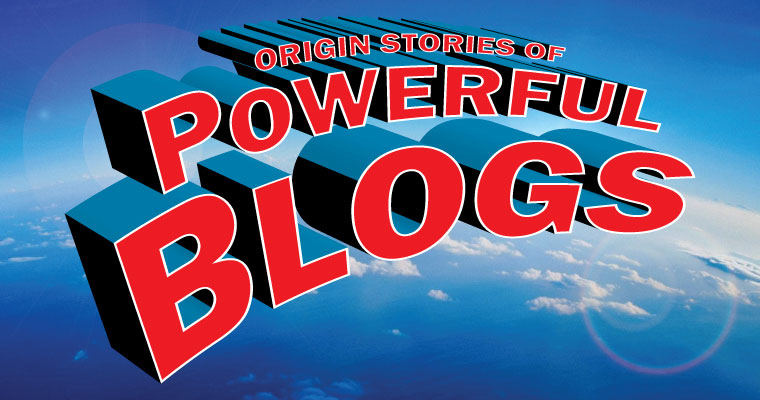I am always interested in how high-traffic blogs got their start, and if you are toiling in obscurity you are probably wondering the same. To this end, we’ve published an interview series with content all-stars involved in the early stages of the industry’s most powerful blogs (be sure to also check out the first and second post in the series). The interviews get to the core of answering: “What mistakes were made?”, “What worked well right off the bat?”, and “What would be done differently?”… essentially guiding the not-so-successful content creators down a path to greatness.

This interview features Sean Work, the inbound marketing director for KISSmetrics. The KISSMetrics blog has thousands of shares and attracts top-notch guest posts from industry thought leaders. Read on to hear Sean detail the early days of the KISSmetrics blog and how he got to where they are today.
1. Are there any metrics of success for the blog you can share?
Our traffic is a good metric believe it or not. It really reflects our brand’s power. One issue is some of our content is intended for mass appeal (within the internet marketing world) and other content is very focused. So, some content may seem unpopular, but it’s really because it’s directed to a specific audience on that day.
2. Early on, what was the blog’s main objective?
The objective was to post really thorough and intelligent content on Internet marketing. The initial KISSmetrics team consisted of a group of really intense, how should I say… elitists I guess. They didn’t want to look dumb. So everything that came out of the blog was a reflection of the brand. And that reflection was to look like we were the hottest stuff in town.
3. Roughly how much time was spent on the blog early on?
At first it was 50% of my time. We were only posting twice a week back then. Now it’s 90% of my time and we post every day and then some.
4. What was your initial strategy for the blog? Did you have a specific game plan, did you just hit publish, or something in-between?
The only game plan was to publish content that didn’t suck. We weren’t hell bent on trying to drive leads from it. We just wanted to become known for putting out great content.
5. How did you come up with topics for the blog?
At first I would come up with topics and put them in a Google Doc spreadsheet. I would have Hiten Shah and Neil Patel give a score between one and five (five being a great topic) for each topic. I would average the scores, and anything that was a four or better we ran with.
The problem with this method is we would hand off these topics to our content writers and they would come up with something totally different than what we expected. It turned out it wasn’t a great system at all. It is much better to let writers send you several topics and you pick the ones you want to run with.
6. How long was the content you created?
I think it has always varied. But we always have liked long and detailed content. Short stuff usually glosses over subject matter and doesn’t deliver much value to readers.
7. How frequently did you publish new content?
At least twice per week.
8. What content types did you use most frequently that really worked?
That would be in-depth articles and infographics.
9. What KPIs (if any) were used early on to determine if you were gaining traction?
A lot of people will probably laugh at this but: Tweets and page views.
10. What content types (if any) from the early days of the blog did you quickly retire?
We didn’t do much but blog posts and infographics back then.
11. What content (if any) worked really well, but was something you moved away from?
We slowed down on putting out infographics. And this simply had to do with internal resources constantly shifting around. If you can make great infographics, I definitely recommend it. If you can’t – it’s probably not worth the time or energy.
12. How did you promote your content back in the day? Did you or someone involved with the blog have an established following, or did you start from scratch?
Luckily we have always had a strong following. Our founders are social media rock stars, so promoting content was a breeze. The only thing I would do once in a while was reach out to other companies if we had mentioned them in a blog post. That little tactic has seemed to leak and now everyone is doing it. So I stopped (I figure it’s getting annoying).
13. Did you ever think about pausing or quitting the blog… or limiting your investment in it?
Not once.
14. How long did it take until the blog got “traction”?
I think by the time I had come on board, the blog was already starting to hit hard. My first instructions were to keep it going along with other marketing tasks. It turned out to do so well, I was instructed to ONLY focus on the blog. That was probably six months after starting.
15. If you had to start over knowing what you know now, what would you do differently?
Probably nothing. What guided our direction were constraints. So doing it again would be a completely different because of a new set of constraints, freedoms, and access to things.
Featured Image: Created by author for Search Engine Journal
Sean Work’s photo used with permission.





![AI Overviews: We Reverse-Engineered Them So You Don't Have To [+ What You Need To Do Next]](https://www.searchenginejournal.com/wp-content/uploads/2025/04/sidebar1x-455.png)